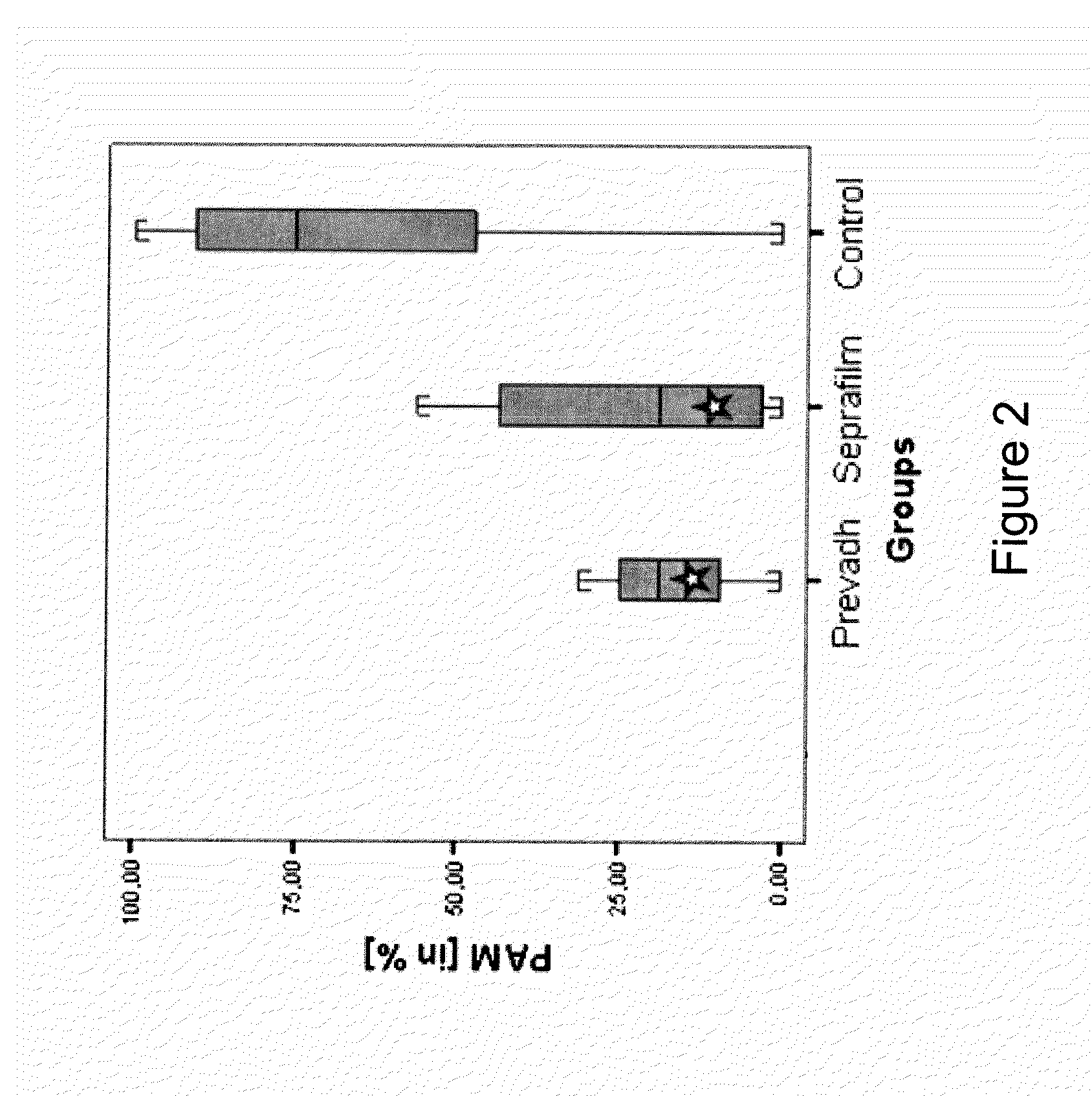Method for the improvement of mesh implant biocompatibility
a mesh implant and biocompatibility technology, applied in the field of surgery, can solve the problems of chronic pain and adhesion formation, seroma formation, and impaired abdominal wall function, and achieve the effect of reducing the risk of adhesion formation
- Summary
- Abstract
- Description
- Claims
- Application Information
AI Technical Summary
Benefits of technology
Problems solved by technology
Method used
Image
Examples
example 1
Use of an Anionic Polysaccharide
[0040]Male Sprague Dawley rats, weighing 400-500 g are used.
[0041]A macroporous, middleweight polypropylene mesh is used in the trial. This mesh should not be used intraabdominally without antiadhesive barriers. Polypropylene mesh only serves as control group.
[0042]The antiadhesive barrier tested in combination with VM consists of anionic polysaccharides (Seprafilm®). The choice of the antiadhesive barrier is based on experimental and clinical studies showing an antiadhesive effect and good biocompatibility of the materials as well as on their availability to be purchased separately.
[0043]Observation time is 30 days to assure completed wound healing in order to be able to examine tissue integration and long-term complications like seroma and adhesion formation. Surgery is performed under sterile conditions.
[0044]Rats are anaesthetized with an ip injection of 110 mg / kg BW of Ketavet® (Ketamine-hydrochloride 100 mg / ml, Pharmacia, Germany) and 12 mg / kg B...
example 2
Use of a Collagen Membrane
[0049]The setup is the one as described in Example 1, but the antiadhesive barrier tested in combination with VM consists of atelocollagen type 1 (Prevadh®).
example 3
Use of Amniotic Membrane
[0050]Besides the various commercially available antiadhesive barriers which are specifically designed for the combination with synthetic hernia meshes, preliminary findings indicate a potential of sealed AM for this indication. Due to the biomechanical characteristics of AM, the technical difficulties concerning application to the mesh and fixation are similar to the use of other organic barriers and coatings.
[0051]The efficacy of FS to securely fit and fix AM to a polypropylene mesh in our previously published IPOM model in rats (n=14). The AM is checked for vitality prior to implantation and pre-cut to squares of 2×2 cm. These samples are attached to VM by means of 0.2 ml Artiss (4 I.U.) each. The mesh is additionally fixated with 4 corner sutures.
[0052]Antiadhesive properties of AM are shown and AM is securely attached to the mesh after an observation period of 14 days. FS is fully degraded and neovascularisation is detected histologically. Our preliminar...
PUM
 Login to View More
Login to View More Abstract
Description
Claims
Application Information
 Login to View More
Login to View More - R&D
- Intellectual Property
- Life Sciences
- Materials
- Tech Scout
- Unparalleled Data Quality
- Higher Quality Content
- 60% Fewer Hallucinations
Browse by: Latest US Patents, China's latest patents, Technical Efficacy Thesaurus, Application Domain, Technology Topic, Popular Technical Reports.
© 2025 PatSnap. All rights reserved.Legal|Privacy policy|Modern Slavery Act Transparency Statement|Sitemap|About US| Contact US: help@patsnap.com



